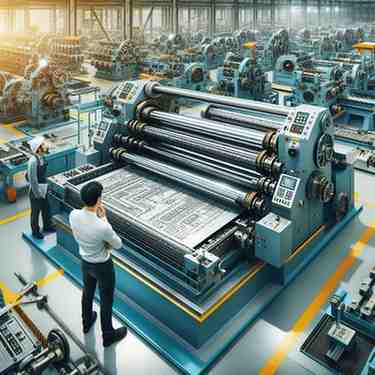The metal forging sector is undergoing a significant technological shift with the emergence of automatic plate rolling machines. These machines have supplanted traditional manual processes, fundamentally changing metal forming processes with their automation, precise, and repetition. Automatic plate rolling machines have made metal shaping processes quicker, safer, and more efficient than ever, due to their inclusion of CNC, or PLC control systems, hydraulic power, and intelligent automation.
What is an Automatic Plate Rolling Machine?
An automatic plate rolling machine is a high-performance metal forming tool developed for rolling metal plates flat into round cylindrical or conical shapes. Unlike conventional plates rolls which have manual controls for roll position, pressure, and speed, the automatic plate rolling machine has programmed control over these roll parameters and will monitor them to allow for the appropriate bending without the operator manually adjusting in the process. There are a variety of materials that can be deformed, including aluminum, stainless steel, and carbon steel, which can also differ in thickness and diameter.
Key Properties and Technological Developments
Modern hydraulic plate rolling machines are equipped with CNC or PLC controls that let users enter parametric data to roll consistently. Features such as auto-feeding systems, hydraulic controls, digital operators, etc., allow for precision in operation and reduced setup time. Servo motors improve roll smoothness and can be energy efficient. Many models also improve productivity and worker safety with auto-correction systems and interlocks.
Applications in Metal Forging Industries
Automatic plate rolling machines are critical components within the metal forging and fabrication industries where precision, strength, and reliability are paramount. These machines are utilized in the constructing of pressure vessels and boilers and pipelines for energy and process industries; storage tanks and structural components in Oil, Gas, and Water as well. In renewable energy, they are important in the manufacture of wind towers and cylindrical shells. In marine engineering, plate rolling machines are used to shape ship hulls and other heavy structural parts. In addition, construction and heavy machinery, depend on these machines to form large and thick curved metal plates, ensuring superior accuracy. The ability to achieve high precision, repeatability, and excellent surface finish is one reason why automatic plate rolling machines are a critical element in industries that require uniformity and precision, regardless of scale.
Benefits of Automatic Plate Rolling Machines
Facilitating the adoption of automatic plate rolling machines can yield multiple efficiencies and competitiveness for the forging industry. Due to automated control systems promoting bending and curvature precision free from the variations of manually rolled sheets, these machines produce incredible precision. With higher productivity, automatic rolling machines dissipate less time to setup and operate for higher output while consuming less production time. With less manual processing, machine dependency is achieved, which will lessen operator fatigue and worker dependency providing a less burdensome and more ergonomic work space. Safety focus and concerns can be implemented protecting operators to reduce any liability and security risk associated with working near a large machine. Automatic plate rolling machines deliver unmatched consistency and minimal waste of material, leading to a reduced cost of production, while providing the lowest costs in products available in metal fabrication facilities for modern manufacturing costs.
Role in Modernizing Metal Forging
Automatic plate rolling machines are among the most significant components of the Industry 4.0 revolution that incorporates intelligent manufacturing systems with real-time monitoring of data, predictive maintenance, and ultimately, digital control of production processes. They have the flexibility, and the capacity to work with advanced alloys, that will make them ideal in the next generation of forging. As manufacturers seek to do more, faster, with improved quality and sustainability; automatic plate rolling machines deliver the technological advantage that results in greater competitiveness for potential global markets.
Conclusion
The advent of automated plate rollers, while revolutionizing metal fabrication, Automatic Plate Rolling Machine Manufacturers delivers automation in the quality standard of precision engineering. These machines improve safety, accuracy, and productivity which allow metal fabricators to work more intelligently, sustainably and promote innovation. If a metal fabricator wants to improve the quality and reduce the cost of their product, investing in the automated plate rolling process should be considered as more than an upgrade of the current plate rolling process, it should be considered a long-term competitive opportunity to achieve excellence in metal fabrication.








